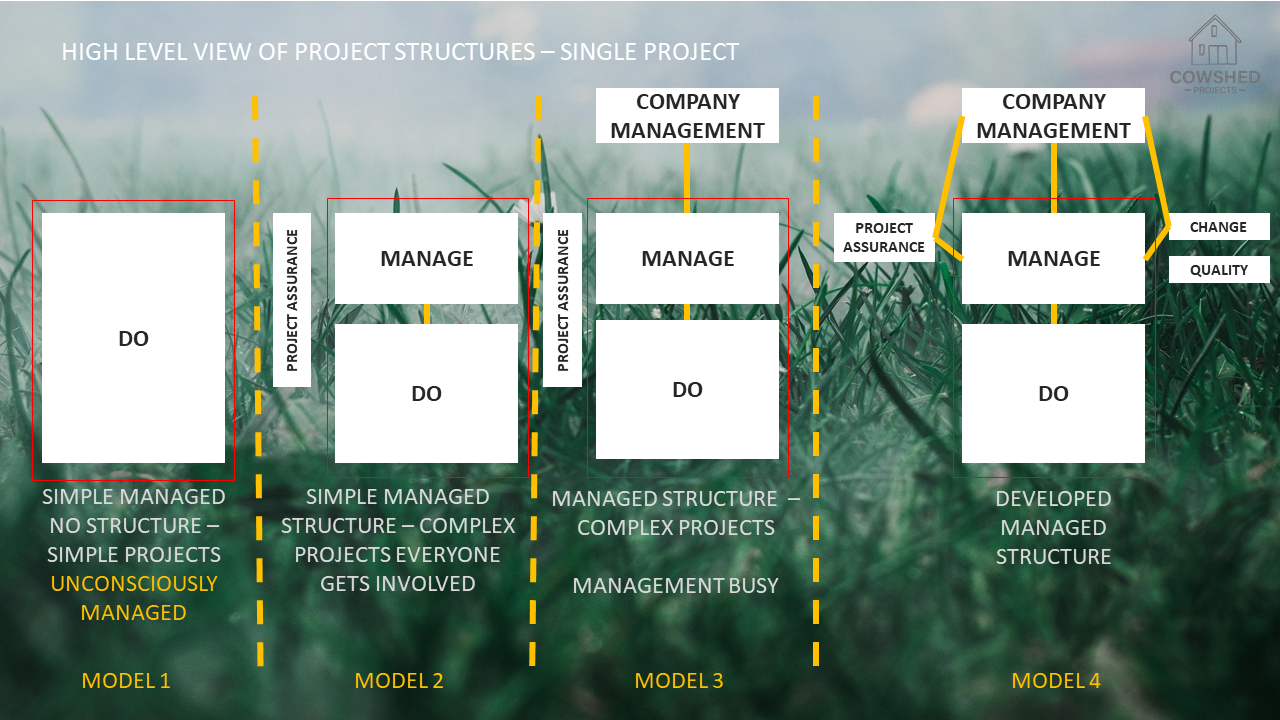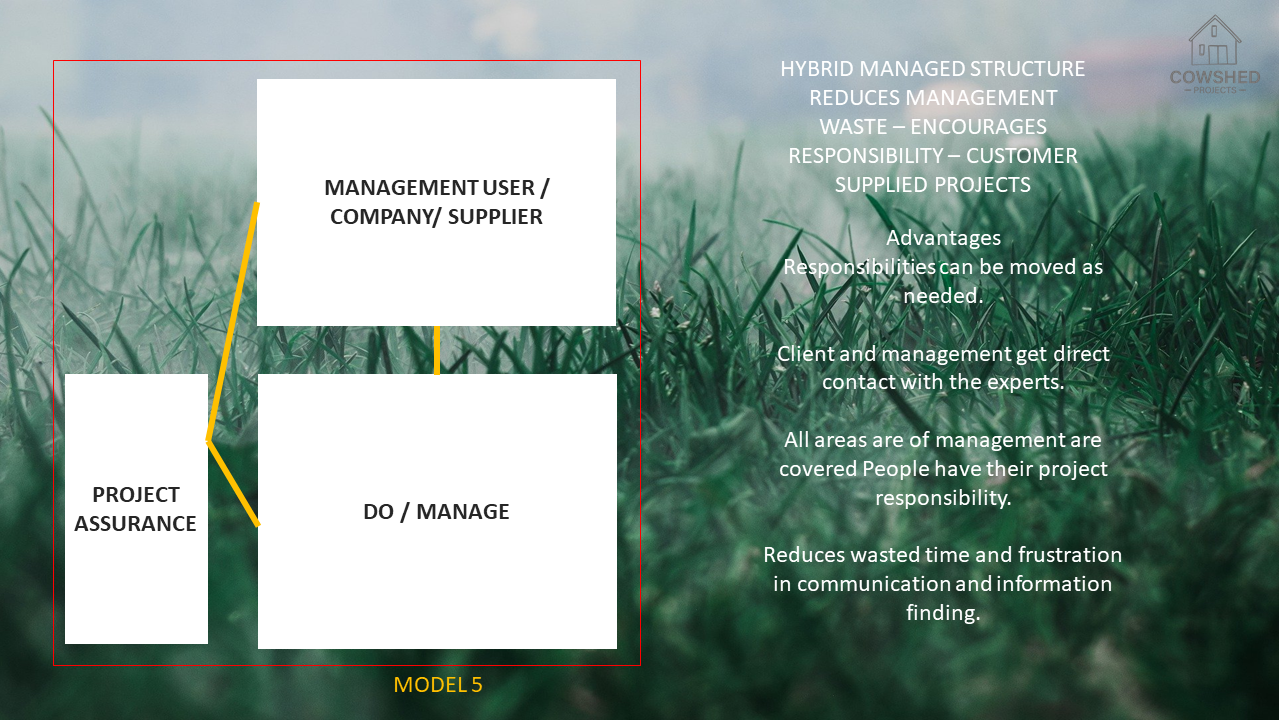|
CS Projects - Making your project management and projects better
Companies grow and projects grow in similar ways to accommodate the company size. The way those projects are structured also needs to adapt. When companies start up, finances are usually spread thinly and you don’t have the perfect set up. Everyone mucks in, does what they can. Yes it could be done better, but the company grows from it. Some fail whilst others succeed and the latter slowly get it to something that works for them. In the world of the project, as the company grows the projects have to grow in terms of size or number. How they are managed develops accordingly. The management have to stop getting their hands dirty in the work of producing so and take on more responsibility for managing the projects. Then they take a step back to just manage the company duties which grow as well. How the projects get managed also needs to evolve. The ultimate textbook version is a model, where there is some sort of change/contract control and quality control. Well, that’s what they say you should aim for, but it doesn’t necessarily have to be that way across the board! After all every project is different, so why should the way you structure them be the same? Don't get transfixed by a one way fits all approach if you want to have successful projects!!! You do need to be aware though of the different ways to use them effectively. Model 1 This is the all-in project. It is run unconsciously. Everyone mucks in. You have a tight knit group that can communicate very effectively. No one needs to be the manager. Someone will be a leader but how it gets done doesn’t tend to matter. Model 2 This is a simple managed structure. The management take a step back and deal with the management of the project. Again, it is a small group, with little sub-contracting. There is a bit of structure and a few defined roles and responsibility. It exists well, with a tight group that communicate well. Model 3 Here, there are now quite a few projects going on. The management is unable to look after them all, but still need to be aware of them and make decisions. A roll is formed to manage the project that sits between the management and the doing. Model 4 This is a fully developed single project model. The projects are complex and management are very busy. At this point there needs to be authority in place to cope with decision making in the important areas of quality and change. Some companies are happy to remain in model 1. Others never feel comfortable enough to progress beyond model 2. There is nothing wrong with either. Many end up in some form of model 3 in order to cope. For most model 4 is a bridge to far or not understood! There is also an option to introduce a project assurance role. This is project quality (not the quality in terms of the product, but the quality of how a project is managed, sometimes in the form of a project director, head of projects or PMO). This roll picks up the elements that perhaps are being missed by the doers and the managers in checking that the project is being run properly and where changes to the project may be needed. There is another way Model 5.
It gives you the reassurance of model 4 with the balance of resources and tighter communication that you get from model 2 and 3. This allows management to be involved in the project without doubling up on project management work. It may mean taking a conscious step back from how the company is naturally developing, but could be more efficient. This is to remove a controlling project manager, removing the barrier between the doing and management and using more effectively the project assurance roll. The project management responsibilities are given to the appropriate people on the project team, this removing another layer. Responsibility and leadership of the project is given to the people doing it. The project assurance oversees and picks up the gaps that can’t be filled by management and maybe also do some of the ‘doing’ depending on skills available to the project. It reduces the lines of communication in and out of the project, whilst protecting the project from getting out of hand. It, like all the other models, will not be right for every project, but it is an option, which, if monitored, can work very well. It is also where cowshed projects can really help above advising. If you are interested in finding out more please get in contact simon@cowshedproejcts.com I will explain more about the management and doing items that compliment these models in another blog soon. Also to consider are program and portfolio management (this is how multiple projects are managed at the same time) NB: This is a very high level view of how projects can be structured for a waterfall style project. CS Projects - Making your project management and projects better
0 Comments
Leave a Reply. |
AuthorHi I'm Simon. I've worked in projects for a while now, either management or design. I love projects but they're frustrating. Hope some of this help you. Archives
October 2023
Categories |


 RSS Feed
RSS Feed